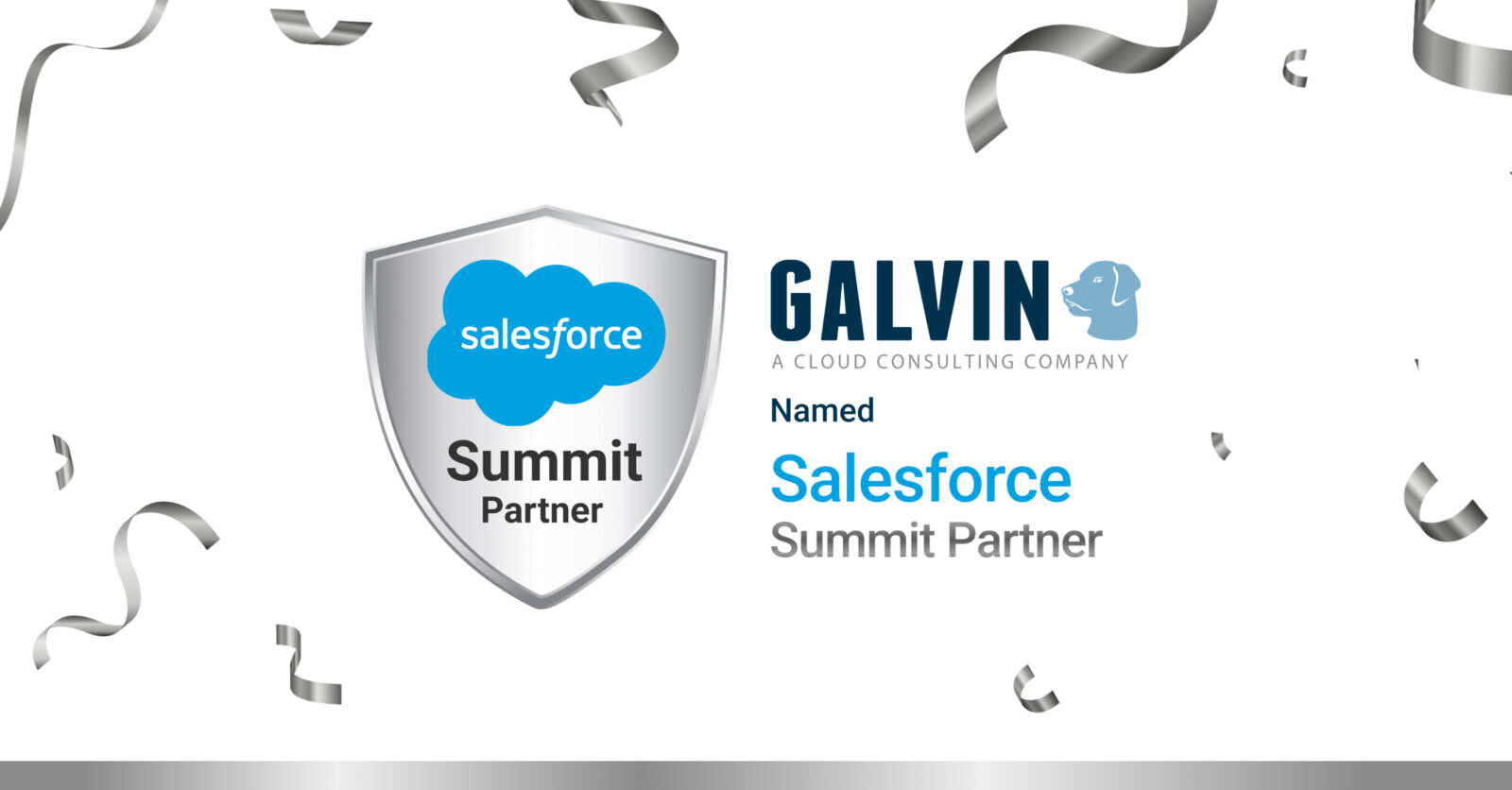The Key To Driving Salesforce Adoption: Acceptance
For most businesses, implementing CRM software is often a risky and hefty investment. Even after months of carefully evaluating organizational needs, creating comprehensive plans to accommodate changes to workflows and processes, and thoroughly testing to ensure everything integrates as expected, there is still a decent chance that you’ll hear one of the following statements after all is said and done:
“But this is how we’ve always done it!”
“It’s too hard, I can’t get it to work how I want.”
“I don’t know what I’m doing, but I do know spreadsheets!”
“So you want me to update Salesforce instead of selling?”
Whether you’ve recently implemented Salesforce as your CRM of choice or made the much-needed migration from Classic to the Lightning Experience, it can be a hard pill to swallow knowing that it’s a real and unfortunate possibility that some people will simply not use the software. As the old adage goes, you can lead a person to software, but you can’t make him use it.
Why does this happen? Change — as great and transformational as it is — tends to bring resistance with it. When people feel unconfident, uncomfortable, or uneasy, they will resist what’s new and cling to what’s familiar. It’s a natural human reaction. It might explain why your sales team won’t let go of outdated workarounds or bloated spreadsheets, even though they have better tools to use.
Whatever the reason, you can help teams feel more confident, comfortable, and calm in using Salesforce by managing the inevitable resistance that comes with change. The best way to do this is by creating an environment and culture that supports something you can’t quite capture in an implementation strategy: Acceptance.
A path to acceptance
Acceptance is the act of consenting to something that is received. Contrary to belief, you do not have to like or enjoy something to accept it. In reality, acceptance is about allowing what is to simply be — it is making the choice to accept rather than reject. When you choose acceptance, you no longer resist and create unnecessary friction.
Like adoption, acceptance is in the eye of the beholder and cannot be forced. There is no magic button to get everyone to accept the fact that they must use Salesforce. (If buttons like that existed, the world would be an entirely different place.)
What you can do, however, is promote a culture that is more accepting of change by encouraging a shift in attitude and behavior.

Reduce resistance to change by fostering a collaborative and supportive work environment (Image Source)
Shaping attitudes
Acceptance starts with attitude and attitude starts with the individual.
Attitude — how we think or feel about something — influences how we respond and act. For example, if you believe you’re going to fail terribly at using the new process builder workflows in Salesforce, then chances are you’ve already determined your fate. On the other hand, if you feel excited to use the new process builder workflows because you received the proper training on how to use it, then chances are you’ll have no issues.
Likewise, what we experience can directly influence our attitudes. If you had a not-so-great time using Salesforce at your last job due to an absence of data quality standards, then it shouldn’t be surprising that the news of a Salesforce rollout at your current job gives you understandable pause.
You can minimize people’s aversion to change and shape their attitudes about using Salesforce by fostering an environment that keeps communication open, educates and encourages learning, facilitates collaboration, and involves teams in the process of change.
Communicate
When change happens, people want to know what’s going on and how it affects their work. Be proactive and transparent in your communication — communicate how Salesforce will not only improve current processes, but will transform how they do their jobs. For salespeople (who may be the hardest to convince), communicate this by showing, not telling — let them take it for a test drive. There are several strategies you can use to sell the value of change and get people onboard with Salesforce.
More importantly, once your organization decides to implement or migrate to Salesforce, do not delay in telling teams! Let them know long before implementation starts. A communication strategy is recommended to ensure teams are aware of the change, lessening the risk of backlash. Likewise, be sure to keep communication open both ways throughout this process, even after implementation — don’t cut off feedback or opportunities for questions. When people feel heard, they are less likely to respond with resistance.
Educate
The best defense against resistance to change is education. As shared in part 1 of our migration from Classic to Lightning series, there are several ways to put the power back in people’s hands through learning. However, the environment must support failure as part of the learning process. After all, fear of failure is one of the greatest sources of resistance.
Facilitate
Don’t work against people, work with them — you don’t want to create more resistance! This means creating an environment that welcomes the discussion of problems, challenges, and concerns. If someone is struggling with adding a new opportunity in Salesforce because of new validation rules or workflow rules, you don’t want them to struggle in silence. Instead, you want them to feel empowered to talk about the problem they’re experiencing and propose a solution.
A Salesforce governance program can help with this. The purpose of a governance program is to not only improve systems and processes, but to add just enough structure that future improvements to Salesforce can be effectively managed and implemented. It creates a space for teams to discuss specific issues, recommend improvements, and share ideas. By collecting this feedback, it can be used to prioritize future functionality and improve the Salesforce experience — both good things that drive user adoption.
Involve
Depending on the size of your organization, this one might be tricky. Regardless, it’s important to involve anyone directly affected by change in the process. The earlier you can involve people, the less resistance you’ll face down the road. People are more willing to accept change if they have the opportunity to directly contribute to it.
Likewise, people are more willing to accept change if they understand why it’s happening. “Why do I have to enter all this data?” Questions like this are bound to rise as teams adjust to new workflows and processes in Salesforce. Instead of brushing off these questions rooted in resistance, explain the why — frame the answer so they understand how doing this task directly impacts the work of others and the goals of the organization. Show how they’re involved and important to the process.
When you make an effort to improve people’s experiences at your organization, you can inspire more positive emotions and beliefs, and in return, influence more positive behaviors.

Let go of those old spreadsheets (Image Source)
Influencing behaviors
Behavior — how we respond or act — can sometimes be the hardest thing to manage when it comes to change. Because our brains are hardwired for routine and familiarity, we often rely on habits to guide our behavior. It’s speculated that it takes an average of 21 days to form a habit and about the same amount of time to break one. However, several studies surmise it actually takes about 10 weeks (or 70 days). This is important to remember as teams adjust to new workflows and processes in Salesforce — their brain is not only dismantling automatic behavior, but rewiring itself for new ones. You cannot expect adoption or acceptance to happen overnight.
To speed up the process of user adoption, however, you need to find ways to not only support desired behaviors, but eliminate undesired ones. You can accomplish this by removing old workarounds, building meaningful reports, adding more functionality, and gamifying the Salesforce experience.
Remove old workarounds
Are salespeople still stuck in spreadsheets? If so, it’s time to cut off access. Likewise, if there are duplicate data sources and systems that people are using, shut those down. Remind teams that if it’s not in Salesforce, then it doesn’t exist. It sounds harsh, but it’s easier to rip off the band-aid now rather than later. For those stuck in old behaviors, keep an eye on them and offer extra support.
Build meaningful reports
Sometimes it’s easier to show rather than tell. To help people see the value of using Salesforce, build reports and dashboards that allow them to clearly see the results of their work. For sales teams, set up dashboards that allow them to manage the pipeline more effectively. This will allow them to make better decisions and take action faster, creating more confidence and trust in the new system.
Add more functionality
Take advantage of add-ons and plugins from Salesforce AppExchange to completely elevate the Salesforce experience for teams. However, don’t add more functionality just for the fun of it — make sure there’s a reason. If a team has moved from Classic to Lightning, then you will need to address any gaps in workflows and processes.
Gamify it
To create excitement for Salesforce, make it fun! Whether it’s setting daily or weekly goals to complete training modules in Trailhead or closing the most tickets in Salesforce, keep people engaged and focused by creating some healthy competition. Consider gamification apps to really take it to the next level.
Implementing strategies that encourage a shift in attitude and behavior can help teams become more accepting of change. However, sometimes this isn’t enough — sometimes it calls for a shift in culture as well.

Add employee incentives to align behaviors with goals (Image Source)
Attitudes + Behaviors = Culture
Culture is the sum of the attitudes and behaviors of your organization. Likewise, culture is the reflection of your organization’s goals. If your culture does not support desired attitudes, behaviors, or goals, then it’s time to make some changes.
Cultural change is a process that requires the same approach to implementing software. You must evaluate the current state, determine the desired state, make a plan to get there, then implement it. It also requires the same approach to managing change — you need to minimize resistance by creating an environment that supports the desired culture. And just like getting people to use Salesforce, it will definitely not happen overnight!
However, you can start taking steps to transform your culture by assessing organizational values, rethinking your hiring process, updating your training and onboarding, and improving (or adding) systems that support teams.
Identify values
What is important to the organization and its success? If productivity, innovation, and growth are deemed essential, then look around to see what actions or beliefs are not in line with these values. Although implementing Salesforce is a step in the right direction, it cannot be the cure-all for your culture. You need to make changes that align with the values of your organization to truly make a lasting impact.
Evaluate hiring
Spend some time evaluating your hiring processes to ensure that job postings include desired experience, behaviors, and attitudes. This sounds easy, but sometimes it can be missed. If you’re looking for candidates with Salesforce experience, then be clear in the level of knowledge you’re expecting. Likewise, if you’re open to training those with no experience, adjust your interviewing process to include questions or exercises that gauge one’s growth mindset.
Update training
There are two sides of training to consider: onboarding and ongoing. While evaluating your hiring process, also evaluate the onboarding process for new employees. If there’s no mention of Salesforce, then don’t delay! Update training plans to include new workflows and processes. Likewise, for those that have gone through the transition, provide training and support as needed. You can offer individual coaching with Salesforce super users, schedule time for teams to dig into the Trailhead community, or even create quick yet helpful how-to videos.
Improve systems
From a high-level view of your organization, it’s likely there are systems in place that are sources of resistance. Performance, pay, rewards, recognition, organizational structures — can any of these be improved by adding incentives that support goals? Likewise, is there anything that doesn’t exist that should? Take this as a perfect opportunity to communicate, educate, facilitate, and involve — let teams have a say in how to improve their experiences.
Driving Salesforce adoption
Shaping attitudes, influencing behaviors, and changing culture sounds like a lot of work just to get people to use Salesforce. However, it’s all part of the process of managing how people respond to change.
To ensure Salesforce adoption is a success at your organization, you need to cultivate a culture that is more accepting of change. Although you cannot control how people will react or behave, you can influence how they experience change. By creating an environment that is more supportive of desired attitudes and behaviors, you create an environment where resistance cannot thrive. And when resistance cannot thrive, the only outcome is acceptance.
Is change causing you pain?
Managing change is hard work, but we’ve got your back. Whether your organization has made the switch to Salesforce or is still thinking about it, Galvin’s team of certificated Salesforce consultants can walk you through every step of the process to ensure everyone is set up for success. Give us a call today at 317-297-2910 or send us an email at letstalk@galvintech.com to learn more.
Also published on Medium.
— Related Articles —
— Also on Galvin Tech —
Also published on Medium.








